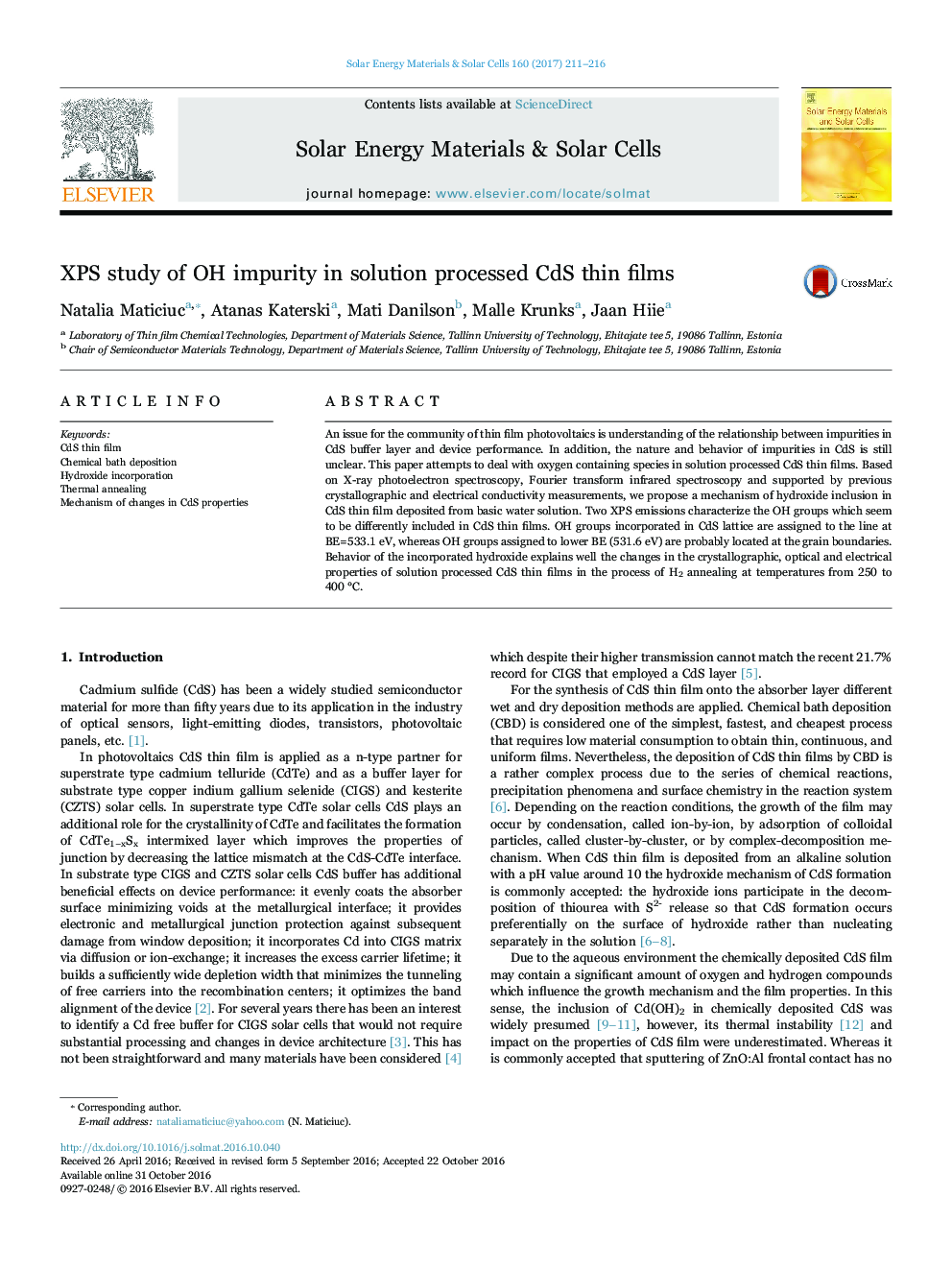| Article ID | Journal | Published Year | Pages | File Type |
|---|---|---|---|---|
| 6457329 | Solar Energy Materials and Solar Cells | 2017 | 6 Pages |
â¢XPS reveals the presence of hydroxide species in chemically deposited CdS thin films.â¢Hydroxide group is included in CdS lattice in the deposition process.â¢In the annealing process hydroxide group decomposes to water and CdO.â¢Hydroxide decomposition is responsible for changes in CdS properties.
An issue for the community of thin film photovoltaics is understanding of the relationship between impurities in CdS buffer layer and device performance. In addition, the nature and behavior of impurities in CdS is still unclear. This paper attempts to deal with oxygen containing species in solution processed CdS thin films. Based on X-ray photoelectron spectroscopy, Fourier transform infrared spectroscopy and supported by previous crystallographic and electrical conductivity measurements, we propose a mechanism of hydroxide inclusion in CdS thin film deposited from basic water solution. Two XPS emissions characterize the OH groups which seem to be differently included in CdS thin films. OH groups incorporated in CdS lattice are assigned to the line at BE=533.1 eV, whereas OH groups assigned to lower BE (531.6 eV) are probably located at the grain boundaries. Behavior of the incorporated hydroxide explains well the changes in the crystallographic, optical and electrical properties of solution processed CdS thin films in the process of H2 annealing at temperatures from 250 to 400 °C.
